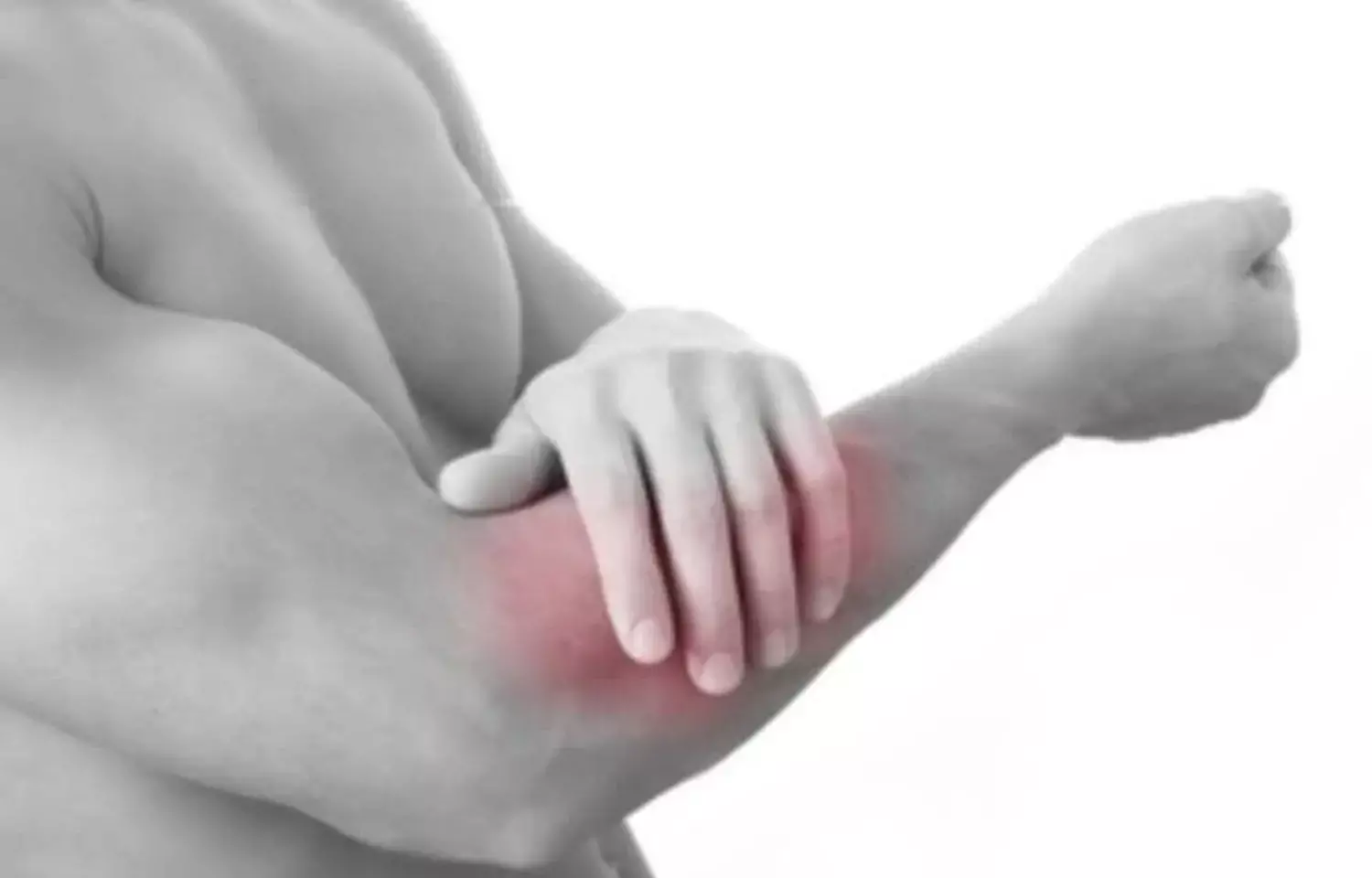- Home
- Medical news & Guidelines
- Anesthesiology
- Cardiology and CTVS
- Critical Care
- Dentistry
- Dermatology
- Diabetes and Endocrinology
- ENT
- Gastroenterology
- Medicine
- Nephrology
- Neurology
- Obstretics-Gynaecology
- Oncology
- Ophthalmology
- Orthopaedics
- Pediatrics-Neonatology
- Psychiatry
- Pulmonology
- Radiology
- Surgery
- Urology
- Laboratory Medicine
- Diet
- Nursing
- Paramedical
- Physiotherapy
- Health news
- Fact Check
- Bone Health Fact Check
- Brain Health Fact Check
- Cancer Related Fact Check
- Child Care Fact Check
- Dental and oral health fact check
- Diabetes and metabolic health fact check
- Diet and Nutrition Fact Check
- Eye and ENT Care Fact Check
- Fitness fact check
- Gut health fact check
- Heart health fact check
- Kidney health fact check
- Medical education fact check
- Men's health fact check
- Respiratory fact check
- Skin and hair care fact check
- Vaccine and Immunization fact check
- Women's health fact check
- AYUSH
- State News
- Andaman and Nicobar Islands
- Andhra Pradesh
- Arunachal Pradesh
- Assam
- Bihar
- Chandigarh
- Chattisgarh
- Dadra and Nagar Haveli
- Daman and Diu
- Delhi
- Goa
- Gujarat
- Haryana
- Himachal Pradesh
- Jammu & Kashmir
- Jharkhand
- Karnataka
- Kerala
- Ladakh
- Lakshadweep
- Madhya Pradesh
- Maharashtra
- Manipur
- Meghalaya
- Mizoram
- Nagaland
- Odisha
- Puducherry
- Punjab
- Rajasthan
- Sikkim
- Tamil Nadu
- Telangana
- Tripura
- Uttar Pradesh
- Uttrakhand
- West Bengal
- Medical Education
- Industry
ORIF of Forearm fractures have similar soft tissue outcomes when closed primarily or in delayed fashion

Andrew S. Bi et al conducted a study to investigate the effect of delayed closures, whether delayed primary closure (DPC) or split-thickness skin grafting (STSG), of operatively treated forearm fractures on short-term soft tissue outcomes. The authors found that - diaphyseal forearm fractures that undergo ORIF have equivalent short-term soft tissue outcomes when closed primarily at index surgery or when closed in a delayed fashion.
The article has been published in Indian Journal of Orthopaedics.
In this retrospective cohort comparative study of two academic-level one trauma centers adult patients with diaphyseal forearm fractures who underwent open reduction and internal fixation (ORIF) were either closed primarily at index surgery, or underwent delayed closure, either with DPC or with a STSG. Primary outcome measures were soft-tissue outcomes as measured by wound healing (delayed healing, dehiscence, or skin breakdown) and fracture-related infection (FRI) at time of final follow-up.
All forearm fractures were taken to the operating room within 24 h of presentation. If open injuries, they were taken for an irrigation and debridement and concomitant ORIF using compression plating, lag screw fixation with neutralization plating, or bridge plating depending on the fracture pattern.
A formal fasciotomy was performed for any cases with a pre-operative diagnosis of compartment syndrome; otherwise, the forearm fascia was not released beyond the surgical approach. At the end of the procedure, primary closure was always attempted using a 2–0 or 3–0 non-absorbable monofilament suture for the skin.
When unable to be closed, the incision was closed as much as possible using tensioned non-absorbable monofilament sutures; then the remaining open wound was covered with a vesselloop shoelace technique and NPWT dressing. These patients were taken back to the operating room within a few days for a repeat irrigation, debridement, and attempted DPC. A STSG was performed if the wound was unable to close within 7 days. Following STSG, a standardized protocol was followed, including NPWT for five days, followed by daily dressing changes using an antimicrobial ointment, non-adhesive dressing, and a compressive wrap.
The observations of the study were:
• Eighty-one patients with 81 diaphyseal forearm fractures underwent ORIF with a mean follow-up of 14.3 months.
• Forty-one fractures (50.6%) were open injuries.
• Thirteen patients (16.0%) were unable to be closed primarily and underwent an average of 2.46±0.7 surgeries including final coverage, with an average of 4.31±2.8 days to final coverage.
• Four patients (30.8%) underwent DPC and 9 (69.2%) underwent STSG.
• Five (6.6%) patients in the delayed closure group had pre-operative compartment syndrome and underwent formal two-incision fasciotomies.
• There were no significant differences between delayed versus primary closure in wound healing complication rates, FRI, or radiographic union.
The authors concluded that - presence of an open fracture is the main risk factor associated with the inability to attain primary closure following diaphyseal forearm fracture. Results suggest that requiring delayed closure using DPC or STSG does not affect rates of soft tissue outcomes as measured by wound healing or FRI when compared to primary closure at index surgery for diaphyseal forearm fractures.
MBBS, Dip. Ortho, DNB ortho, MNAMS
Dr Supreeth D R (MBBS, Dip. Ortho, DNB ortho, MNAMS) is a practicing orthopedician with interest in medical research and publishing articles. He completed MBBS from mysore medical college, dip ortho from Trivandrum medical college and sec. DNB from Manipal Hospital, Bengaluru. He has expirence of 7years in the field of orthopedics. He has presented scientific papers & posters in various state, national and international conferences. His interest in writing articles lead the way to join medical dialogues. He can be contacted at editorial@medicaldialogues.in.
Dr Kamal Kant Kohli-MBBS, DTCD- a chest specialist with more than 30 years of practice and a flair for writing clinical articles, Dr Kamal Kant Kohli joined Medical Dialogues as a Chief Editor of Medical News. Besides writing articles, as an editor, he proofreads and verifies all the medical content published on Medical Dialogues including those coming from journals, studies,medical conferences,guidelines etc. Email: drkohli@medicaldialogues.in. Contact no. 011-43720751


